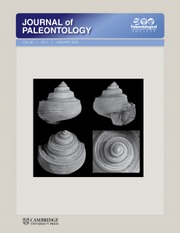Article contents
Reassessing the diversity, affinity, and construction of terminal Ediacaran tubiform fossils from the La Ciénega Formation, Sonora, Mexico
Published online by Cambridge University Press: 10 October 2024
Abstract
The terminal Ediacaran Period is signaled worldwide by the first appearance of skeletonizing tubular metazoan fossils, e.g., Cloudina Germs, 1972 and Sinotubulites Chen, Chen, and Qian, 1981. Although recent efforts have focused on evaluating the taxic composition and preservation of such assemblages from the southwestern United States, comparable forms reported in the 1980s from Mexico remain to be re-examined. Here, we reassess the latest Ediacaran skeletal materials from the La Ciénega Formation of the Caborca region in Sonora, Mexico, using a combination of analytical methods: optical microscopy of extracted fossils, thin-section petrography, scanning electron microscopy and energy dispersive X-ray spectroscopy, and X-ray tomographic microscopy. From our examination, we conclude that the La Ciénega hosts a polytaxic assemblage of latest Ediacaran tubular organisms that have been preserved through two taphonomic pathways: coarse silicification and calcareous recrystallization preserving finer details. Further, these fossils show signs that their shells might not have been inflexible or completely mineralized in vivo, and that they might also record tentatively interpreted predation traces in the form of drill holes or puncture marks. This work, along with ongoing efforts around the world, helps to provide a framework for biostratigraphic correlation and possible subdivision of the Ediacaran Period, and further shapes our view of metazoan evolution and ecology in the interval directly preceding the Cambrian explosion.
- Type
- Articles
- Information
- Copyright
- Copyright © The Author(s), 2024. Published by Cambridge University Press on behalf of Paleontological Society
References
- 1
- Cited by



